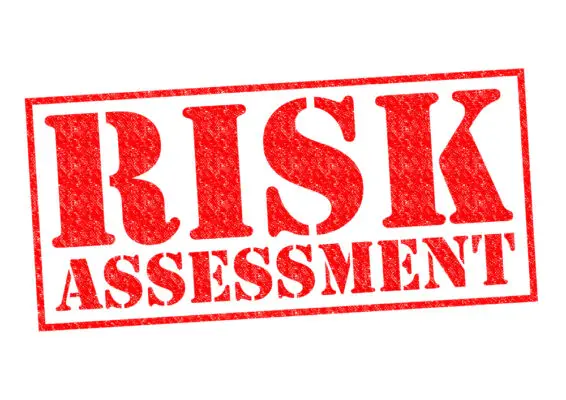Fatigue is a significant occupational hazard that affects individuals across various industries. The consequences of fatigue can be detrimental, leading to decreased productivity, impaired decision-making, and increased risk of accidents and errors.
To mitigate these risks, organizations have turned to the use of fatigue risk assessment tools. A fatigue risk assessment tool is a systematic and objective approach that quantifies and evaluates the level of fatigue experienced by individuals in the workplace. This tool enables employers to identify potential fatigue-related risks and implement appropriate control measures to ensure the health and safety of their workers.
This article explores the concept of fatigue risk assessment tools, including their definition, the various types of fatigue, the factors that influence fatigue levels, and the impact of fatigue in different industries.
Examining the effectiveness of these tools, organizations can proactively manage and mitigate the risks associated with fatigue, ultimately promoting a safer and more productive work environment.

What is a Fatigue Risk Assessment Tool?
Fatigue Risk Assessment Tools (FRATs) are valuable resources in managing fatigue-related risks in various industries. These tools provide an objective and systematic approach to identifying, assessing, and mitigating fatigue hazards in the workplace.
Incorporating scientific research and data-driven analysis, FRATs enable organizations to implement effective fatigue risk management strategies, enhancing safety, productivity, and employee well-being.
Benefits of Fatigue Risk Management
Implementing a fatigue risk management system has been shown to improve productivity, reduce errors, and enhance overall safety in high-risk industries. This is achieved by identifying and managing fatigue-related risks using a fatigue risk assessment tool.
Such a tool allows organizations to systematically evaluate and monitor fatigue levels among employees, implement appropriate countermeasures, and ensure compliance with regulatory requirements. Organizations can optimize performance, minimize accidents, and promote employee well-being by effectively managing fatigue.
| Benefits of Fatigue Risk Management |
|---|
| Improved productivity |
| Reduced errors |
| Enhanced overall safety |
Types of Fatigue
There are three main types: physical fatigue, mental/emotional fatigue, and cognitive fatigue.
Physical fatigue refers to the exhaustion of the body’s physical resources. It is often the result of prolonged physical activity or lack of adequate rest. When physically fatigued, the body may feel weak, heavy, or achy. Physical fatigue can also lead to decreased coordination and slower reaction times.
Mental/emotional fatigue, on the other hand, is characterized by a depletion of mental and emotional energy. This type of fatigue can be caused by various factors such as stress, anxiety, or intense cognitive activity. When experiencing mental/emotional fatigue, individuals may feel mentally drained, have difficulty concentrating, or struggle to make decisions.
It can also manifest as emotional exhaustion, where individuals feel emotionally drained and may have difficulty regulating their emotions.
Lastly, cognitive fatigue pertains to the weariness of cognitive functioning. It typically results from activities that require sustained attention, concentration, and mental effort. This can include tasks such as studying for exams, working on complex projects, or engaging in activities that demand high levels of mental focus.
When experiencing cognitive fatigue, individuals may find it challenging to think clearly, have difficulty remembering information, or experience a decline in problem-solving abilities.
Understanding these different types of fatigue is crucial in assessing and managing fatigue-related risks in various domains such as aviation, healthcare, and transportation. Recognizing the specific type of fatigue individuals may be experiencing, appropriate strategies can be implemented to mitigate the negative effects and promote overall well-being.
Physical Fatigue
Physical fatigue can be observed in workers with slumped posture, drooping eyelids, and decreased muscle strength. It is an important aspect to consider when assessing fatigue in the workplace.
A fatigue risk assessment tool can help identify and monitor physical fatigue in workers, enabling organizations to implement effective fatigue risk management systems.
These systems aim to mitigate the impact of physical fatigue on worker performance and safety, ultimately improving overall productivity and well-being.
| Physical Fatigue Symptoms | Symptoms |
|---|---|
| Slumped Posture | Drooping Eyelids |
| Decreased Muscle Strength |
Mental/Emotional Fatigue
Mental and emotional fatigue can manifest in workers through symptoms such as impaired concentration, emotional instability, and reduced motivation. These symptoms create a challenging environment that hinders productivity and jeopardizes overall well-being.
Dimensions of fatigue play a significant role in how we function. Physical, mental, and emotional fatigue can manifest in workers through symptoms such as impaired concentration, emotional instability, and reduced motivation. One must be keenly aware of fatigue-related signs such as these, particularly in critical industries like the aviation maintenance industry.
Fatigue during night shifts, for instance, can significantly influence fatigue factors in doctors and bus drivers. Even the average worker can be susceptible to this, given their average commute times and possible rotating schedules.
An adequate fatigue risk assessment would factor in these external and environmental risk factors, in addition to actual fatigue risks and the established biological process that influences fatigue.
Fatigue regulations and Fatigue Risk Management Plans are essential tools for managing human fatigue and preventing serious consequences. Utilizing fatigue risk indices and the biomathematical fatigue model can help quantify fatigue severity and consequent performance defects.
Fatigue risk management research shows that tools such as the fatigue calculator, the executive fatigue risk calculator, and the fatigue self-assessment calculator are highly beneficial in assessing fatigue risk levels.
Part of fatigue awareness also involves knowing the basics about fatigue and recognizing the signs of compassion fatigue. For instance, a consensus-based fatigue risk management standard helps an active staff understand and anticipate fatigue risks.
It can be especially beneficial when paired with fatigue self-assessment questions and custom fatigue assessment questions that prompt individuals to examine their sleep disorders, accumulative sleep debt, and average sleep period.
Furthermore, the impact of fatigue on cognitive performance effectiveness cannot be underestimated. A fatigue risk analyzer tool or Fatigue Observation / Self-Assessment Rating can estimate performance under fatigue. In addition, fatigue risk management tools can help manage fatigue in aviation maintenance and other critical industries, ensuring safety and productivity.
In the end, handling fatigue due to additional work hours, commuting times, or other causes is crucial for maintaining existing health and promoting innovative healthcare content. It’s also vital for accident investigations and critical incident investigations. Through an understanding of fatigue dimensions and fatigue risk management, we can create healthier and safer workplaces.
A fatigue risk assessment tool can be utilized to address these issues effectively. This tool allows organizations to identify and assess the level of mental and emotional fatigue experienced by workers.
Using this tool, targeted interventions and adjustments can be implemented to improve well-being and enhance productivity.
Cognitive Fatigue
Cognitive fatigue can significantly impact workers, leading to decreased cognitive function and impaired decision-making abilities. This can ultimately hinder productivity and potentially jeopardize the success of organizational goals.
It is a key aspect to consider when conducting a fatigue risk assessment tool, as cognitive fatigue can result in performance deficits. Research has shown that cognitive fatigue can cause attention lapses, decreased working memory capacity, and reduced information processing speed. All of these factors can negatively affect job performance.
Therefore, it is crucial for organizations to address cognitive fatigue and implement strategies to mitigate its effects. This may include providing regular breaks, promoting healthy sleep habits, and implementing workload management techniques.
Addressing cognitive fatigue, organizations can help ensure that their employees are able to perform at their best and achieve optimal productivity.
Factors that Affect Levels of Fatigue
This will explore the factors that influence levels of fatigue, including hours of sleep, human factors such as stress and illness, and work-related tasks and schedules.
Research has shown that inadequate sleep can impair cognitive function and increase the risk of fatigue-related accidents.
Additionally, human factors such as stress and illness can further exacerbate fatigue levels, as they can negatively impact sleep quality and overall well-being.
Furthermore, the nature of work tasks and schedules, such as continuous versus intermittent tasks or activities, can also affect fatigue levels, with continuous tasks often leading to higher levels of fatigue compared to intermittent ones.
Understanding these factors is crucial for developing effective fatigue management strategies in various industries.
Hours of Sleep
Sleep duration is a crucial factor in determining fatigue levels and is therefore an essential aspect to consider when using the fatigue risk assessment tool.
Adequate hours of sleep are necessary for individuals to function optimally and maintain alertness.
Insufficient sleep can increase fatigue levels, impair cognitive performance and increase the risk of errors and accidents.
Research has consistently shown the detrimental impact of fatigue on various industries, highlighting the importance of considering sleep duration when assessing fatigue risk.
Human Factors (e.g., Stress, Illness)
The previous subtopic explored the importance of sleeping enough to mitigate fatigue risk.
However, fatigue risk assessment tools also consider other factors contributing to fatigue, such as human factors including stress and illness.
These factors can negatively impact an individual’s ability to obtain adequate restorative sleep, increasing fatigue levels.
Therefore, fatigue risk assessment tools must encompass a comprehensive understanding of various human factors, including stress, to assess fatigue risk accurately.
Work-Related Tasks/Schedule
Work-related tasks and schedules play a crucial role in determining an individual’s ability to maintain optimal levels of alertness and performance, thereby influencing their overall fatigue levels.
The tasks’ complexity, duration, and timing can contribute to fatigue, especially when they involve repetitive or monotonous activities. Additionally, irregular work schedules, such as shift work or long hours, can disrupt the body’s natural circadian rhythm, further increasing fatigue risk.
Therefore, considering work-related tasks and schedules is essential when conducting a fatigue risk assessment using a fatigue risk assessment tool.
| Shift work or long hours can disrupt the body’s natural circadian rhythm, increasing fatigue levels. | Impact on Fatigue Levels |
|---|---|
| Complexity | Higher complexity tasks can lead to increased mental fatigue. |
| Duration | Longer work durations can result in accumulated fatigue over time. |
| Timing | Tasks performed during nighttime or during the circadian low point can disrupt sleep patterns and increase fatigue. |
| Irregular schedules | Shift work or long hours can disrupt the body’s natural circadian rhythm, leading to increased fatigue levels. |
Continuous vs Intermittent Tasks/Activities
Understanding the differences between these types of tasks is crucial for assessing fatigue risks accurately.
Continuous tasks involve sustained effort over a prolonged period, while intermittent tasks involve breaks or variations in activity.
This knowledge aids in the continuous improvement of fatigue risk assessment strategies.

Impact In Different Industries
The impact of fatigue in different industries is a topic of great importance. The aviation industry is highly regulated due to the potentially catastrophic consequences of fatigue-related errors.
In healthcare, nurses, who often work long hours and irregular shifts, are particularly vulnerable to fatigue, which can compromise patient safety.
Similarly, in industries like construction and manufacturing, fatigue can lead to reduced productivity, increased accidents, and decreased overall performance.
Aviation Industry
Aviation industry professionals rely on a fatigue risk assessment tool to objectively evaluate the impact of fatigue on operational safety. This tool allows for a comprehensive assessment of fatigue-related risks, leading to informed decision-making and effective fatigue risk management strategies.
It helps identify fatigue-inducing factors, establish appropriate rest periods, and implement countermeasures to mitigate the negative effects of fatigue. Such a systematic approach enhances safety and ensures the well-being of aviation personnel and passengers.
Healthcare Staff (esp. nurses)
Healthcare staff, especially nurses, benefit from a systematic approach that allows for evaluating fatigue-related factors, establishing appropriate rest periods, and implementing effective countermeasures to enhance safety and ensure the well-being of medical personnel and patients.
Using a fatigue risk assessment tool enables healthcare organizations to identify potential risks, monitor fatigue levels, and develop strategies to mitigate the impact of fatigue on nurses’ performance and patient care.
This tool provides valuable insights, helping healthcare staff to optimize their work schedules and maintain optimal levels of alertness.
Other Industries (construction, manufacturing, etc.)
Construction, manufacturing, and other industries can also benefit from implementing systematic approaches to evaluate and mitigate factors contributing to fatigue, ensuring the safety and well-being of their workers and optimizing overall performance.
The use of a fatigue risk assessment tool can aid in identifying potential risks and implementing appropriate countermeasures. Research has shown that fatigue in these industries can lead to decreased productivity, increased errors, and higher accident rates.
Therefore, prioritizing fatigue management is crucial for maintaining a safe and productive work environment in the construction and manufacturing sectors.
Frequently Asked Questions
Can a fatigue risk assessment tool be used in any industry or is it specific to certain sectors?
A fatigue risk assessment tool can be used in various industries to evaluate and manage fatigue-related risks. Its applicability is not limited to specific sectors, as fatigue can be a concern in any industry where employees work extended hours or perform tasks requiring high concentration levels.
How often should a fatigue risk assessment be conducted in order to maintain safety standards?
In order to maintain safety standards, a fatigue risk assessment should be conducted periodically, with the frequency determined by the specific industry and the level of risk involved. Regular assessments help identify potential fatigue-related hazards and implement appropriate control measures.
Are there any legal obligations for companies to use fatigue risk assessment tools in the workplace?
Companies may have legal obligations to use fatigue risk assessment tools in the workplace, as these tools help evaluate and mitigate the risks associated with fatigue. Compliance with these obligations ensures the maintenance of safety standards.
Can a fatigue risk assessment tool accurately predict when an individual will likely experience fatigue?
The accuracy of predicting individual fatigue using a fatigue risk assessment tool depends on various factors such as the tool’s design, validation, and the specific context in which it is used. Further research is needed to determine its effectiveness.
Are there any recommended strategies or interventions that can be implemented based on the findings of a fatigue risk assessment tool?
Recommended strategies or interventions can be implemented based on the findings of a fatigue risk assessment tool. These may include implementing proper work-rest schedules, providing education on sleep hygiene, promoting healthy lifestyles, and implementing fatigue management programs.

Conclusion
Fatigue risk assessment tools are crucial in identifying and managing fatigue in various industries. These tools help understand the different types of fatigue and the factors contributing to its levels.
Organizations can implement appropriate measures to prevent fatigue-related incidents and promote safety and productivity by assessing fatigue risks.
These tools are essential in industries where fatigue can have severe consequences, such as transportation, healthcare, and manufacturing.
Fatigue risk assessment tools are valuable resources enabling organizations to effectively address and mitigate the associated risks.

Chris Ekai is a Risk Management expert with over 10 years of experience in the field. He has a Master’s(MSc) degree in Risk Management from University of Portsmouth and is a CPA and Finance professional. He currently works as a Content Manager at Risk Publishing, writing about Enterprise Risk Management, Business Continuity Management and Project Management.

